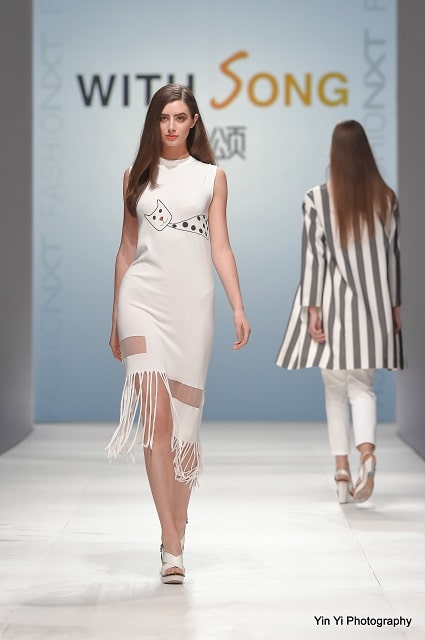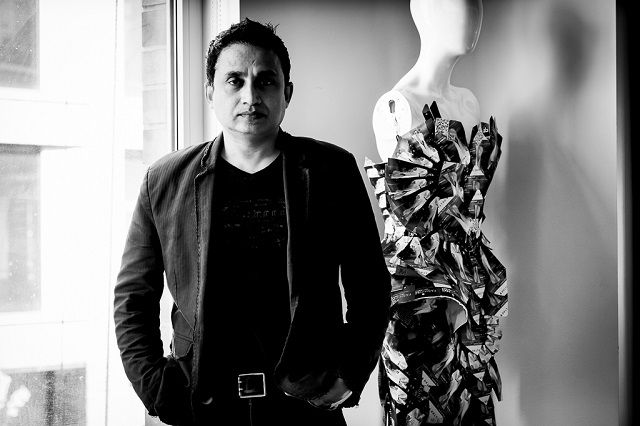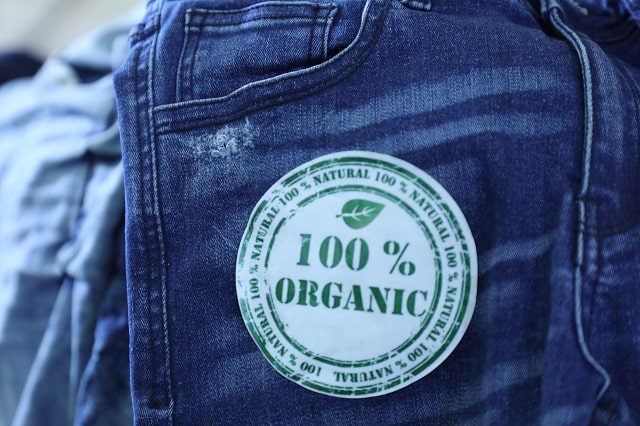10 predictions for fashion industry in 2023: trends, technology and supply chain
发布时间:2023-01-29Prasenjit Tito Chowdhury shared his 10 forecasts regarding fashion industry in 2023.
2023 will be a Fashion Bonanza: Recession and inflation concerns will dampen net growth potential. However, 2023 being the first full year post-pandemic consumers, not just luxury clientele who already have been into enhanced shopping last year, will be celebrating life in every aspect, fashion shopping, experimenting with new trends, going out dressed up more, etc. If the economy dampens too much, it will impact the shopping behavior of lower-income consumers more. This means more gross production, sales as well as experiential aspects of the industry.

Figure 1: In 2023 consumers will be celebrating life in every aspect, fashion shopping, experimenting with new trends, going out dressed up more. Courtesy: FashioNXT
The future of corporate leadership is supply chain: Pandemic underscored the importance of supply-chain at an unprecedented level. In any corporation, the biggest money-making and growth sector creates the most corporate leaders. For example, pre-pandemic, e-commerce and DTC were such sectors, as you have seen companies like Nike for the first time hiring a non-design or non-manufacturing CEO who was an e-commerce CEO. Now that companies have seen the huge stake of having a non-optimized supply chain, and the need for changing it, including near-shoring, renovating sourcing, and many other parameters, they can appreciate the expertise in a new light. Brands will fast-track supply-chain experts to the highest positions in the corporate totem pole.
Gen Z’s collective failure to save the industry from its ethical woes will get worse before it gets better: Gen Z came into the spotlight with their loudest objection to hyper-consumption and its devastating impact on the earth’s sustainability. They snatched the megaphone from the millennials and turbocharged it with unprecedented boldness in shaming the status quo in the most visible ways. However, GenZ despite being a bigger consumer of vintage and recycled clothing also became the biggest consumer of large brands. Obsessed with social media flex, during their time the sales of all large brands have grown leaps and bounds. I am not seeing any strong sign of their moral shift. So, that leaves us only with the effectiveness of government regulations as the saving grace from hyper-consumerism that I elaborate on in the following point.
Searching for sustainability options will continue: Governments around the high consumption countries, aka industrialized world will enhance its pace for regulations on brands to enhance accountability towards sustainability, like stronger demand of transparency towards publishing details of the supply chain for the consumers to decide. (Ref: Mckinsey & Co 2023 Report). Multiple major European countries, France and Germany already rolled out the regulations. Only time will tell whether fashion is ready for that.
Figure 2: Searching for sustainability options will continue among consumers.
Algorithm-decided-content social media will continue to rise: 2022 was the year when the social media realm has seen a fundamental shift in platforms showing content that was decided by the app’s algorithm, not by the user’s social graph (accounts s/he followed, friended). Made popular by Tiktok, which saw huge growth through the pandemic, Instagram increasingly is transitioning to pushing such content in the feed. In the fight for users’ attention, such novel content kept users giving more time to these apps. However, as it reduces exposure to accounts users follow, such lack of certainty to reach the users creates demotivation for creating high-quality and highly edited content, which is the hallmark of fashion content in social media. So, in the tug of war for quality over the organic nature of the content, which of these apps will be the winner in fashion, won’t be decided for another year.
Use of AI-driven creative content tools will be enhanced: 2022 saw AI-driven apps that help create content, both visual and text. 2023 will see how the digital realm will wrestle to differentiate between human-created and AI-generated content. Nonetheless, fashion communication being the most content-heavy of any industry segment, expect huge growth of these tools in fashion content creation, but they being in such an early phase, expect lots of trial and error and experimentation.
 Figure 3: AI-driven creative content tools will be enhanced in 2023.
Figure 3: AI-driven creative content tools will be enhanced in 2023.
Slowdown of e-retailer behemoths’ growth will continue: The biggest corporate winner through the pandemic was companies like Amazon. But as the world opened up and people started shopping in the real world, Amazon faced headwinds on two fronts – overly optimistic expansion, and fewer e-commerce transactions. As more brick and mortar will open up taking advantage of the low-rent commercial spaces, and surviving retailers to create more compelling experiences to attract more shoppers, e-retail behemoths will continue to lose more revenue. This will create more opportunities for companies that can create diverse compelling experiences for the consumers, not only in logistics but also experiences in digital spaces like Metaverse.
Corporate interest in major celebrity colab will dampen: In the era of social media influencers the practice of major fashion brands creating colabs line with major celebrities saw a huge explosion. 2022 saw a colab to unravel between Adidas and Ye named Yeezy which was the biggest such colabs till Jordan brand at Nike. It exposed the vulnerability of such collaborations. Expect much more conservative behavior in this regard in 2023. But colabs will continue, as large companies, despite controlling huge payrolls and resource treasure troves, find them too slow and basic to compete with the appeal of popular personalities in social media and pop-culture space.
Back To Work = New Trends in Workwear: 2023 will see a great increase in people going back to offices and leaving casual house wear behind. In 2022 CEOs have tried prodding (e.g. Starbucks) and incentivizing employees to be on campus with perks (e.g. Nike) to smoothen their way back to the office, But it mostly failed to change the human behavior set in the ways in the previous two years. While there will continue to be an acceptance of remote work to leverage the benefits of hybrid mode work in certain job responsibilities, like, sales, customer service, IT, coding, etc, the cons of co-workers not creating group dynamics, co-learning, culture, and mentorship will be catching up at last. Which means there will be further mandatory requirements for extended on-campus presence (e.g., Disney, Starbucks) which will get further traction amongst the employees. This means, there will be new workwear trends that would be a hybrid of casual and office wear.

Figure 4: 2023 will see a great increase in people going back to offices and leaving casual house wear behind.
Hyper government control of China’s manufacturing will enhance Bangladesh’s position: The way China handled the factory workers during the COVID made many major western brands wary of relying on it so heavily. It was coupled with concern about China’s future workforce shortage led by the past one-child policy. Companies led by example mega-brands like Apple are accelerating the reduction of dependence on China for their manufacturing. While other existing powerhouses of apparel manufacturing like Bangladesh will continue to be better positioned to get more manufacturing orders, including subcontracts from Chinese companies, as well as Indian companies which have already been increasing. However, to take full advantage of such shifts, Bangladesh must increase its capability of lower MOQ and higher quality manufacturing.

Figure 5: Apparel manufacturing like Bangladesh will continue to be better positioned to get more manufacturing orders, including subcontracts from Chinese companies.
What do these predictions mean for Bangladesh’s fashion industry
BGMEA, at last, took the long-expected step to brand Made in Bangladesh, including hosting a week of events in Dhaka. While this is a good start for the brands’ buyers in Bangladesh, the initiative needs to be much much more robust with a global initiative to elevate the brand to the western consumers and their head offices. Made in Bangladesh is still a long way from shedding its past negative image as well as other lingering perceptions. Bangladesh can be inspired by China’s initiative earlier in the millennia where Chinese government and private initiatives created a huge elevation of China’s fashion design knowledge by knowledge transfer from the west, and supporting Chinese designers and brands to show across the western markets. I can speak from my first-hand experience of working with Chinese fashion brands to showcase them in the US in FashioNXT Week, as well as facilitating their participation in other US trade shows.
Bangladesh must focus on low MOQ and high-quality manufacturing orders, and change its perception as such to the western markets. It also needs to get better at taking control of a bigger portion of the supply chain. As western brands are eager to on-shoring or near-shoring their supply chain, Bangladesh must compete to show itself as still the overall better-priced option. Local packaging for the end consumer is one place it can get better.

Author: Prasenjit Tito Chowdhury, Founder and CEO, FashioNXT
I can’t overstate the importance of the cultural shift in Bangladeshis’ mindset of fashion design marketing and technology as high-end degrees and professions as other traditionally coveted degrees and professions. It’s the only way to attract stronger talent and create original brands as well as create technology solutions for the industry – both from the manufacturing and consumer experience side. Consumers of Bangladeshi fashion must improve within the local style-forward consumers must grow, and that demography must grow in size. The presence of Bangladeshi designers, models, stylists, content creators, and influencers while getting better in quality and quantity, but it’s still meager even compared to India, let alone China. Cultivating domestic fashion enthusiasts and consumers has to be a major priority for Bangladesh to improve as a sustainable fashion economy.



